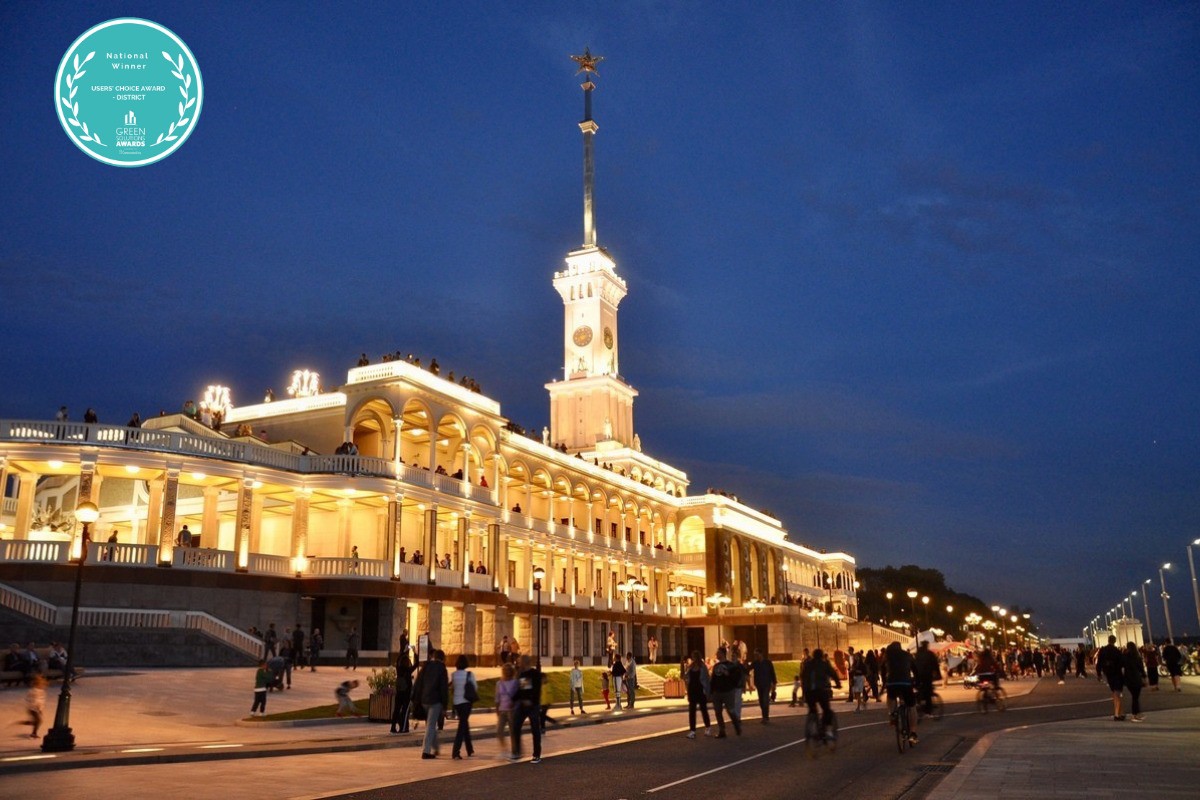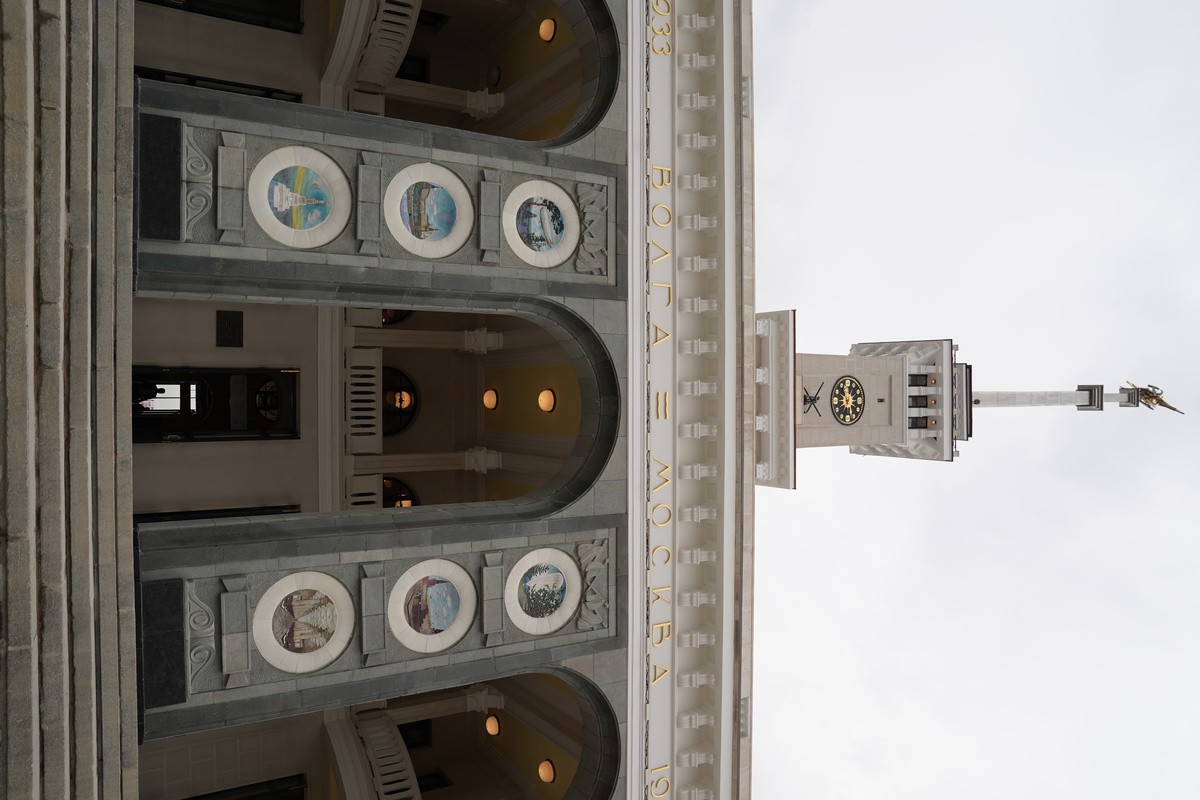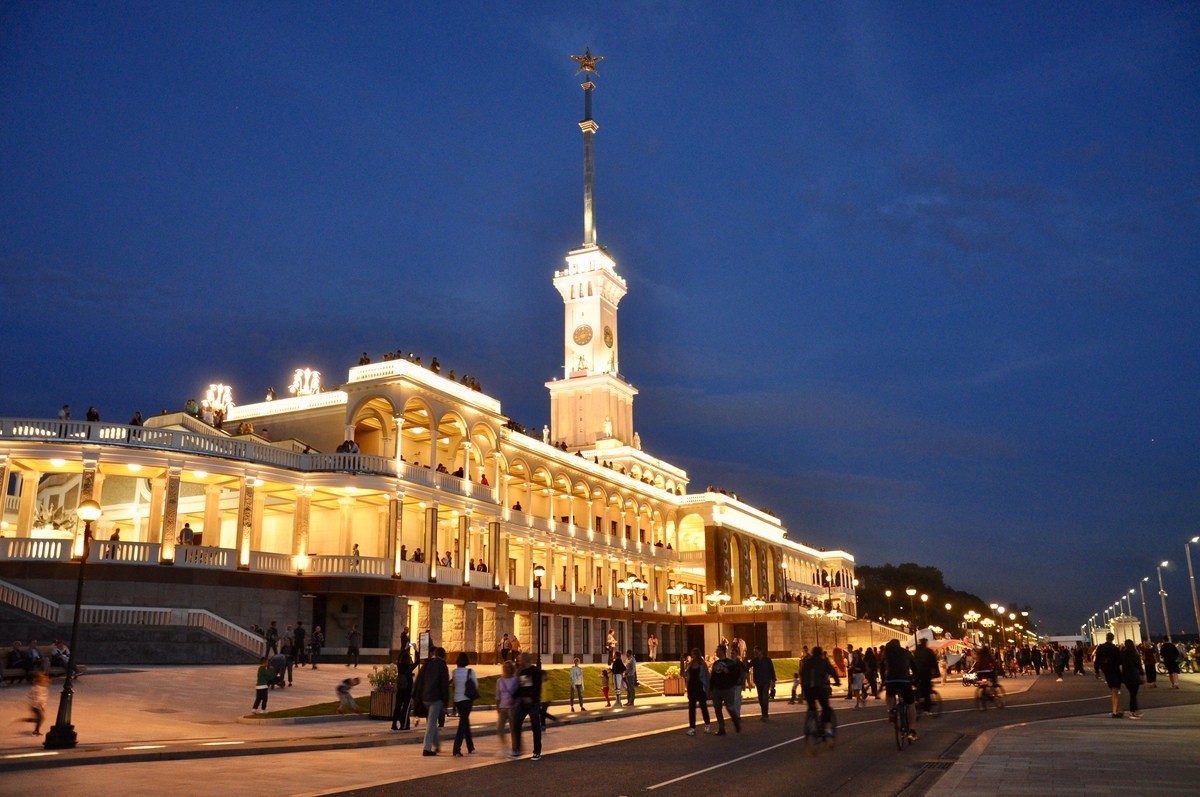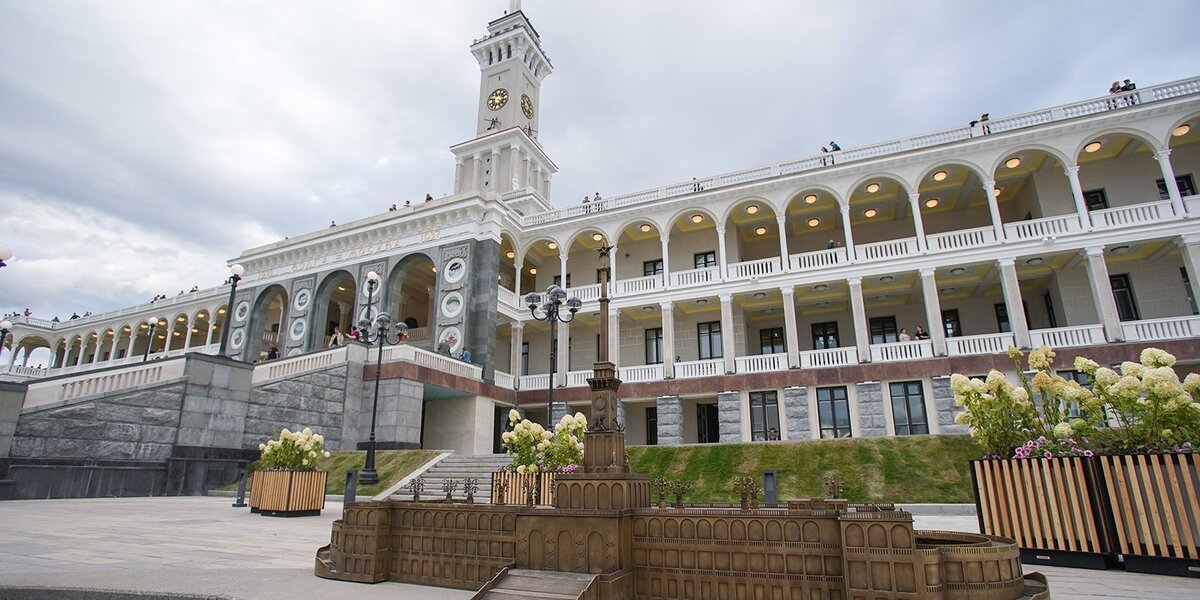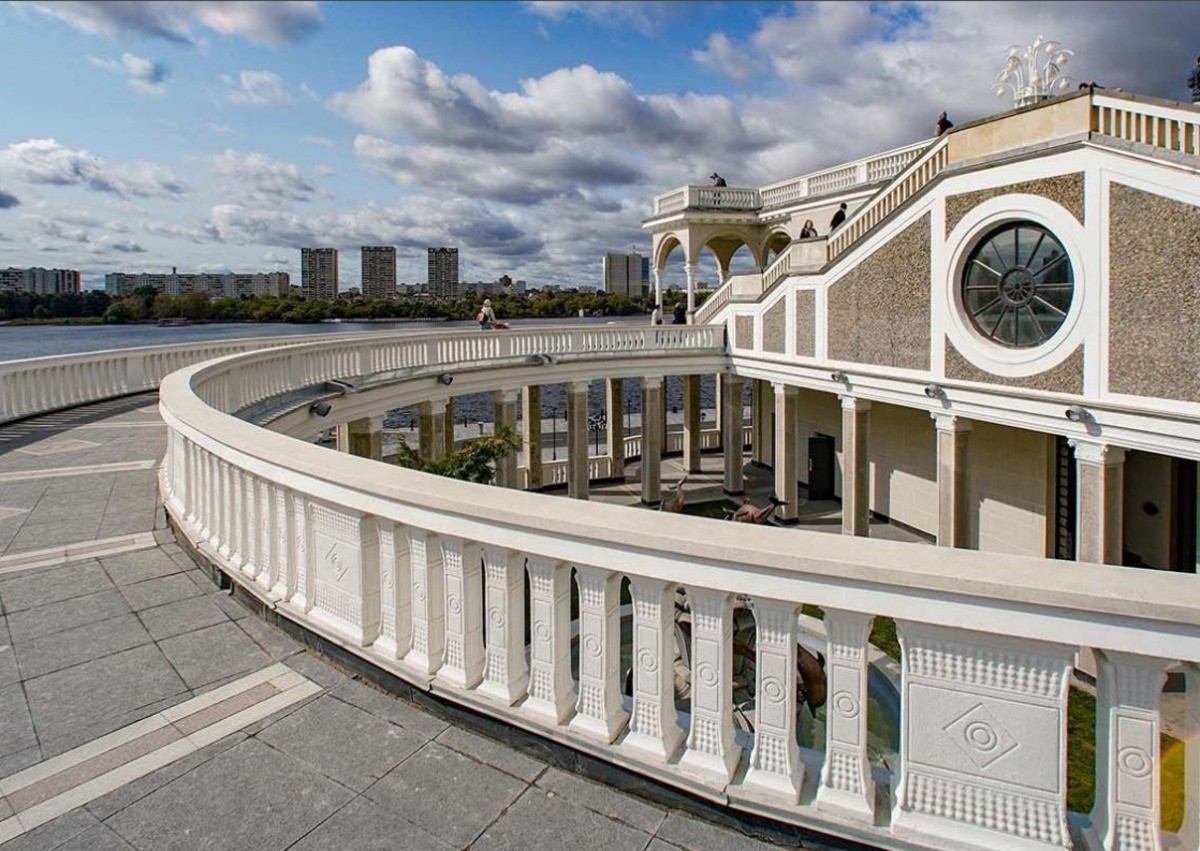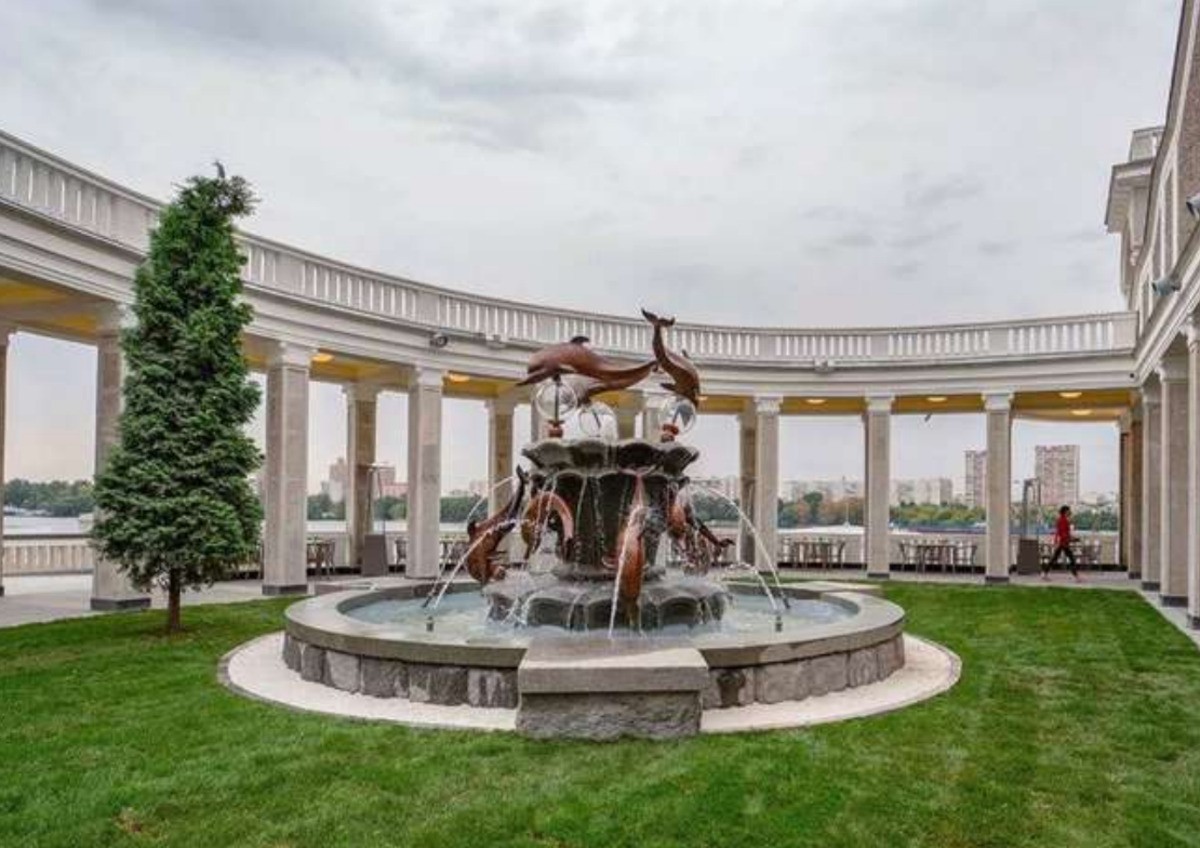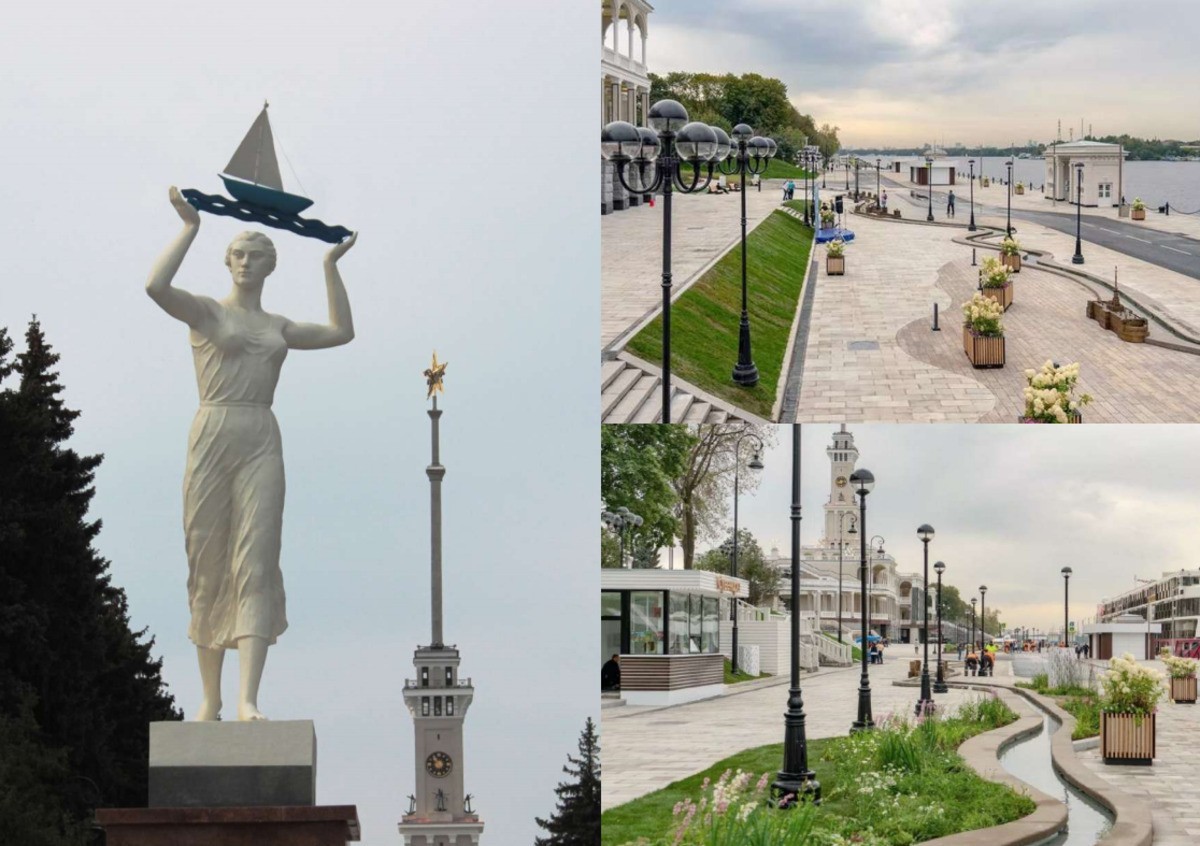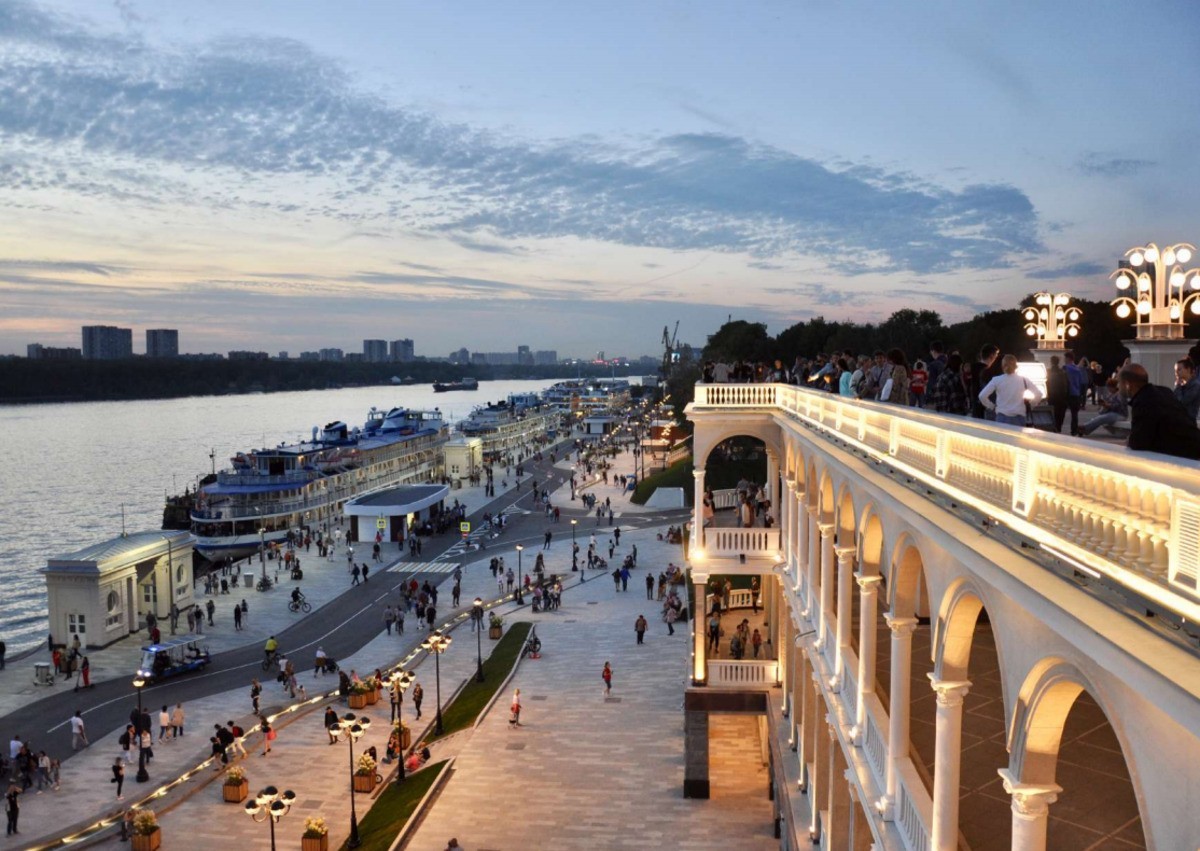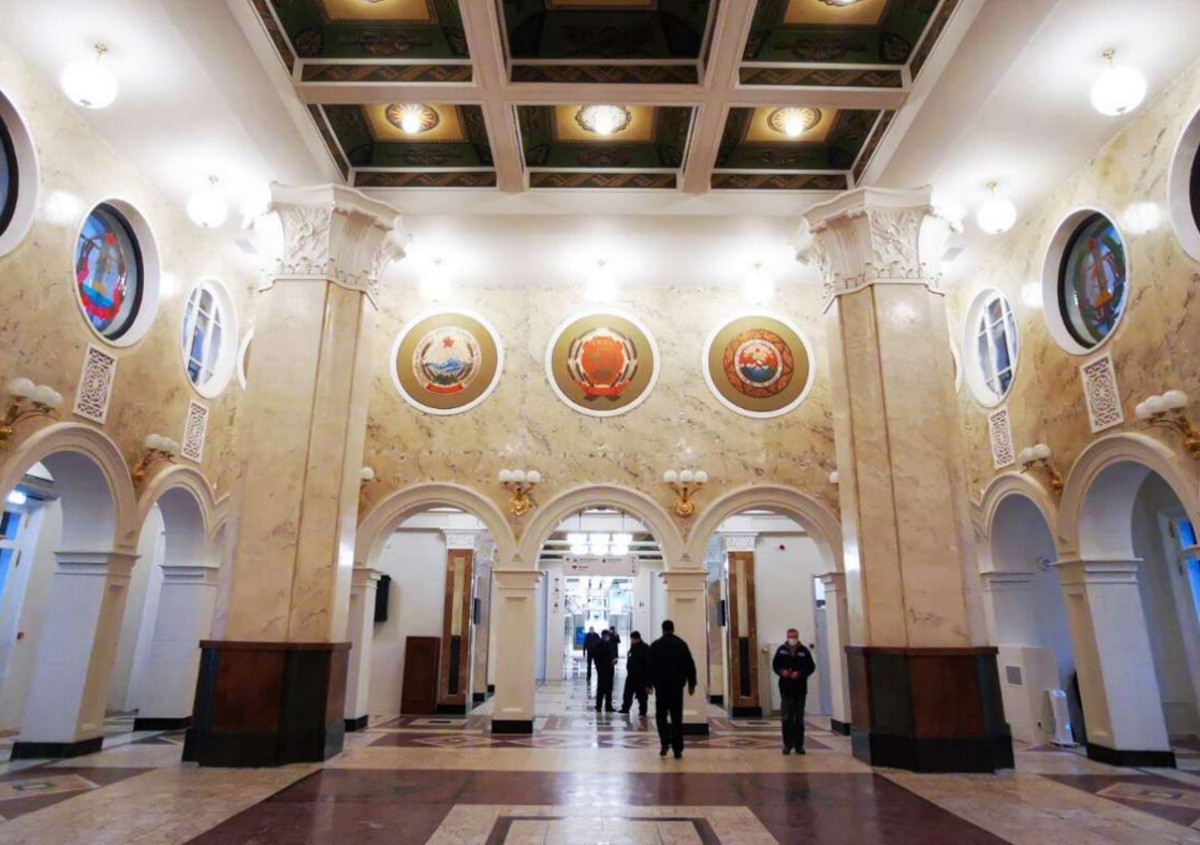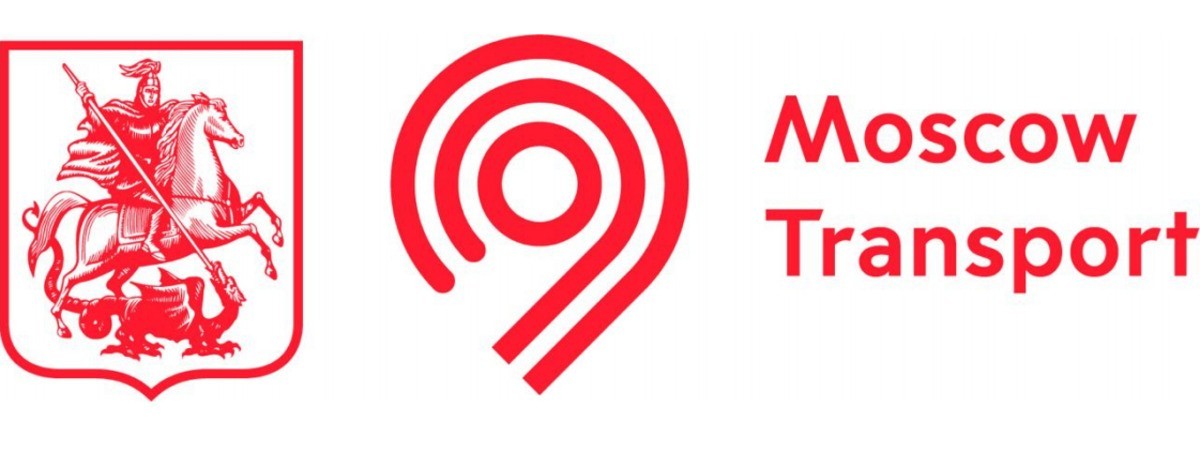The Northern River Terminal of Moscow
Last modified by the author on 12/08/2021 - 16:36
-
100 ha -
15 798 346 €
The Northern River Terminal, one of the two river terminals in Moscow, was inaugurated after renovation.
The restoration project developed by the Government of Moscow was aimed at reviving the historical services of the river terminal as a transportation infrastructure and a place of mass attraction for year-around recreation activities. Besides, the palace-terminal can now be used again to shoot movies and hold city events. The museum of the Northern River Terminal will be a site of attraction for everyone interested in the history of the Moscow transport. River navigation on Moscow waters will be launched and closed at the Northern River Terminal from now and on.
The research and design institute of urban planning MosTransProekt created the project for improvement and landscaping of the embankment of the Northern River Terminal and transport services schemes on the territory of the river terminal.
“The Northern River Terminal is an ambitious reconstruction project of a unique piece of architecture heritage, for which MosTransProekt developed a framework of embankment renovation with cafes and restaurants, a mock-up of Moscow Canal that instantly drew attention of many children, a lounge zone with swimming pools that will be opened next summer. I am confident that the Northern River Terminal will become a starting point for tourism development with river navigation in Moscow,”- said Alexander Polyakov, Head of the State Institution MosTransProekt.
A unique historical piece of architecture from the 1930-s, the palace of the Northern River Terminal, was restored. During the reconstruction works it was possible to preserve most of the original elements of the building and interior details, and the missing parts were overhauled according to the historical patterns.
All 17 riverside wharfs of the Northern River Terminal underwent capital repairs. During the works experts leveled the bottom (the depth of the wharfs is now from 2.1 to 3.6 meters), cleaning it from daily and construction waste that impeded river navigation, and changed the fenders from 1937 to modern ones. Electricity supply from the shore was connected to the boats at rest, which allows to stop using diesel engines during moorage thus positively impacting not only the environment of the park, but also the environment of the nearby residential areas.
The Northern River Terminal is located on the shore of the Khimki water storage.
The palace of the river terminal was constructed in 1933-1937 alongside with the Moscow Canal, way before the creation of the Khimki water storage. The authors of the project are Russian architects Alexey Rukhlyadev and Vladimir Krinskyi.
The palace of the river terminal is a piece of architecture heritage of regional significance and is one of the most-known symbols of Moscow that is captured in many famous movies – Volga-Volga, Novaya Moskva, Colleagues, Vertical race, Domestic Circumstances and others.
The main theme of the architectural design of the Northern River Terminal is the depiction of Moscow as the Harbor of the Five Seas. Due to the inauguration of the Moscow Canal in 1930-s river vessels starting from the Northern River Terminal were able to reach five seas: the Azov sea, the Black sea, the Caspian sea, the Baltic sea and the White sea.
Evocative lines of the building resemble a huge double-decker vessel. The central part with the main entrance and the steeple are the body of the ship with guest cabins. The open galleries with fountains from the northern and southern sides remind of a ship’s head and a stern. The line of columns is like a fenced deck, while the steeple with the star resembles a mast without a sail. The composition is strictly symmetrical.
The overall space of the three-floor palace is 5.3 km2, the length is 150 meters. The height of the steeple is 27 meters. And majestic stairs descend to the wharfs.
The restoration works started in August 2018.
The general design contractor is LLC Engineering Geology of Historical Territories, the general contractor for emergency works is LLC GeoSphere, the general contractor for restoration works is LLC Artstroitechnology.
400 restoration architectures from around Russia took part in the works, while in total 800 workers participated in the project. The implementation of works were coordinated by the Department of Cultural Heritage of Moscow.
Urgent emergency works were conducted in the first place. The greatest concern was caused by the state of the unstable bases and foundations of the terminal, which were reinforced using the injection method. A complex work was carried out to strengthen the supporting structures of the building: columns, walls, floors.
The next stage was comprised of restoration works on revival of historical look and interior planning of the river terminal with maximum preservation of the original elements of the monument:
- installation of structures and walls, restoration of granite covering of galleries using photographs from archives;
- restoration and reconstruction of lighting devices (lanterns-lilies on airshafts, floor lamps on the central staircase, round lamps on galleries, chandeliers and sconces in interiors);
- restoration of the wainscot and repair of metal structures and the spire lifting mechanism;
- restoration of the roof covering using the historical pattern;
- restoration of 4 anchors of the tower and the sculptural composition of the spire, restoration and museumification of 4 historical sculptures Yuzhanka, Krasnoarmeets, Severyanin and Krasnoflotets to be installed on the third tier of the tower (exact copies will be placed on the building);
- reconstruction of balustrades on the rooftop, the first and second floors;
- restoration of 24 polychrome ceramic medallions on the columns at the main entrance - porcelain tablets with images of the Kremlin, the Kievskaya metro station, an airship and other iconic objects of that time;
- facing work on the restoration of granite stairs, stair flights and interior spaces;
- selection and installation of natural white stone on the cornice of the building;
- restoration of terrazite coating of facades, granite cladding of bases and retaining walls.
Programme
- Public facilities and infrastructure
- Public spaces
- Green spaces
Project progress
- Operational phase
Procedure type
- Urban développement permit
Prescriptions and zoning
- Heritage protection area
Key points
- Governance
- Quality of life
- Economic development
- Mobility
Approaches used
- Local charter
Photo credit
The Department of Transport and Road Infrastructure Development of Moscow
Type of territory
The Northern River Terminal park is a cultural heritage site (a work of landscape architecture and gardening art) of regional significance. It was created in 1936-1938 and designed by engineer Timofey Shafransky. The park's layout is based on an axial composition with a system of perpendicular alleys typical for Soviet gardening art of the 1930-1940s.
Climate zone
[Dwa] Humid Continental Hot Summer, severe, dry winter
Public facilities floor area
5 300 000 m²
Refurbished floor area
100,00 ha
Total investment costs (before tax)
15 798 346 € HT
Amount of the investment taken in charge by the local authorities
15 798 346 € HT
Project holder
Project management
Project stakeholders
The Department of Transport and Road Infrastructure Development of Moscow
Other
Local transport authority
Quality of life / density
It is planned to build a passenger cable car between the Skhodnenskaya and Rechnoy Vokzal metro stations in the coming years.
The cable car with a length of 2.3 km will connect the neighboring districts - Levoberezhny, North and South Tushino, separated by the Khimki water reservoir, reducing travel time for public transport passengers by 5-6 times, from 45 to 7-10 minutes.
According to estimates, the passenger traffic on the cable car will be up to 3K people at rush hour or up to 19K people per day, which will partially unload the northern sections of the Zamoskvoretskaya and Tagansko-Krasnopresnenskaya metro lines.
Besides, the cable car will improve the Northern River Terminal transport accessibility and become a tourist attraction.
Culture and heritage
The palace of the river terminal is a piece of architecture heritage of regional significance and is one of the most-known symbols of Moscow. The palace of the river terminal was constructed in 1933-1937 alongside with the Moscow Canal, way before the creation of the Khimki water storage. The authors of the project are Russian architects Alexey Rukhlyadev and Vladimir Krinskyi.
The Northern River Terminal park is a cultural heritage site (a work of landscape architecture and gardening art) of regional significance. It was created in 1936-1938 and designed by engineer Timofey Shafransky. The park's layout is based on an axial composition with a system of perpendicular alleys typical for Soviet gardening art of the 1930-1940s.
Social inclusion and safety
The Northern River park landscape concept provided the return of its historical function - a year-round recreation for all citizens' categories.
Ambient air quality and health
Due to thoughtful planning a favorable environmental situation is created for the restored territory, as well as for nearby residential areas, where demand for real estate has increased.
The Northern River Terminal is an example how a historical building can be restored and adapted for modern use. The architectural project meets all modern criteria and improves not only accessibility and local ecology, but has an impact of the whole city, and most importantly – the community.
SOLUTIONS
- Promotion of cultural/ historical identity
- Noise exposure
- Business development
- Collaborative transportation
- Other
Mobility strategy
All 17 riverside wharfs of the Northern River Terminal underwent capital repairs. During the works experts leveled the bottom (the depth of the wharfs is now from 2.1 to 3.6 meters), cleaning it from daily and construction waste that impeded river navigation, and changed the fenders from 1937 to modern ones. Electricity supply from the shore was connected to the boats at rest, which allows to stop using diesel engines during moorage thus positively impacting not only the environment of the park, but also the environment of the nearby residential areas.
For passenger convenience drop-off zones were fenced, new security check zones fully adapted for low-mobility people were placed.
Riverside wharfs 7 to 12 are dedicated for water cruise navigation. A river control center was renovated.
After the restoration and adaptation for contemporary usage the Northern River Terminal is able to accommodate 4 vessels at a time, and 24 vessels a day. As at its best the river terminal capacity will amount to 1.5M passengers a season
Walking and transport routes lie through the square near the river terminal. For embarkation and disembarkation of passengers, taxis, car-sharing and private passenger transport can drive up to the river terminal.
Passenger car parking is organized in parking pockets along the Leningradskoe highway.
Besides, a transportation hub has been created not far from the river terminal to receive tourist buses.
However, to travel to the riverside wharfs, it will be necessary to use a special electric transport. 57 electric passenger vehicles were purchased to service the station and the adjacent park - 43 shuttles for 13 seats, ten luxury electric cars for five seats, three cars for people with disabilities. For the youngest visitors to the Northern River Station park, a children's electric train will operate.
Ten electric trucks were also purchased to service the park. Not only vacationers but also service personnel and police officers will move around the park in electric vehicles.
SOLUTIONS
The landscaping and renovation project is based on historical drawings. Riverside wharfs were restored to service modern e-vessels, the new innovative for Moscow river transport, which will be launched in 2022: bottom was leveled, electricity supply was linked. The engineering communications were completely changed, and modern fountain engineering systems were installed. New rainwater drainage and engineering communications were applied. We were able to install all modern equipment (e-charges, technical equipment) to the historical building and the surrounding park without distorting its historical appearance. Our task was to bring modernity so that it is not visible, but so that it works and makes the project better and more comfortable. The Northern River Terminal made its comeback as the Harbor of the Five Seas, connecting regions and countries, improving accessibility and transport convenience for Muscovites and guests.
Water management
Before starting the landscaping work on the Northern River Terminal territory, there was no storm sewer. In work carried out, the workers laid about 3.5K meters of new rainwater drainage. They have applied all the necessary engineering communications and systems.
The central theme of the embankment and square improvement was the river. Natural materials and colors - white, grey and beige - were used to decorate these areas.
The river theme is complemented by original small architectural forms: pebble-shaped seats and benches on a natural slope near water bodies.
Reasons for participating in the competition(s)
The main asset of the newly inaugurated Northern River Terminal is that our architects were able to preserve most of the original elements and interior designs, and the missing parts were restored according to the historical patterns. The project represents both the preservation of cultural values and architecture, and modern solutions as electric transport.
Moreover, to preserve environment moving around the territory of the park will only be allowed on electric vehicles. Thus, we expect to improve ecological situation not only in the park, but also in the nearby residential areas.
The Northern River Terminal serves both as a transportation hub with river boats and as a recreational area for people of all ages and abilities. Moreover, the Museum of Moscow Transport and book shops located in the River Terminal will provide educational services.
Building candidate in the category





